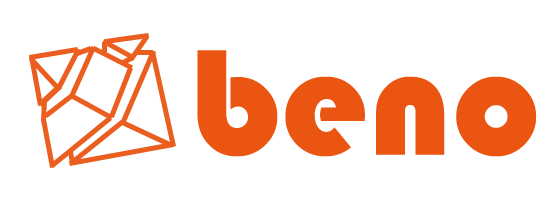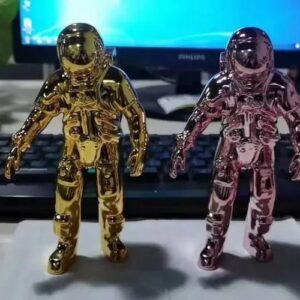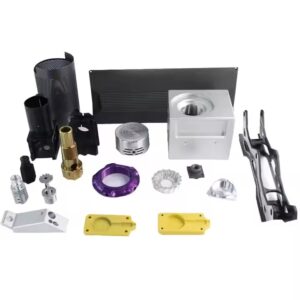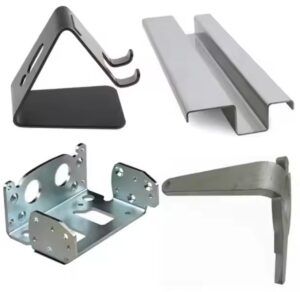Innovative Approaches to Metal Finishing and Surface Treatments
Metal finishing and surface treatments play a crucial role in enhancing the performance, durability, and aesthetics of metal components. Traditional methods have been employed for years, but recent advancements have introduced innovative approaches that offer significant improvements. This article explores various innovative techniques used in metal finishing and surface treatments, highlighting their advantages, applications, and future prospects.
I. Introduction
Metal finishing and surface treatments encompass a range of processes aimed at modifying the surface properties of metal components. These treatments provide numerous benefits such as improved corrosion resistance, enhanced wear resistance, increased hardness, and better aesthetic appeal. By altering the surface characteristics, metal finishing techniques contribute to the longevity and functionality of metal parts.
II. Traditional Metal Finishing Techniques
Before delving into the innovative approaches, it is important to understand the traditional methods employed in metal finishing. These techniques include grinding, polishing, buffing, and chemical treatments such as pickling and passivation. While effective to some extent, traditional approaches often have limitations. They may not provide sufficient protection against corrosion, wear, or environmental factors. Moreover, they might lack the desired aesthetic appeal or fail to meet the increasing demands of modern industries.
III. Innovative Approaches in Metal Finishing and Surface Treatments
A. Introduction to Innovative Approaches
In recent years, significant advancements have been made in metal finishing and surface treatments. These innovative approaches offer superior performance, durability, and customization options compared to traditional methods. Let’s explore some of the most promising techniques in detail.
B. Advanced Coating Technologies

- Physical Vapor Deposition (PVD): PVD involves the deposition of thin films on the metal surface through physical processes such as evaporation or sputtering. This technique offers excellent adhesion, hardness, and wear resistance. It allows for the deposition of various materials, including metals, ceramics, and composites, providing a wide range of functional and decorative coatings.
- Chemical Vapor Deposition (CVD): CVD is another advanced coating technique that utilizes chemical reactions to deposit thin films onto metal surfaces. It offers precise control over coating thickness and composition, resulting in excellent conformity and uniformity. CVD coatings exhibit high hardness, corrosion resistance, and thermal stability, making them ideal for demanding applications.
- Atomic Layer Deposition (ALD): ALD is a precise and controlled coating technique that deposits ultra-thin films with atomic-level accuracy. It involves alternating cycles of gas-phase reactions to create uniform and conformal coatings. ALD coatings offer exceptional barrier properties, corrosion resistance, and unique surface functionalities, making them suitable for sensitive applications.
C. Nanotechnology-based Surface Treatments
- Nanocoatings and Nanofilms: Nanocoatings involve the application of nanoscale layers onto metal surfaces, providing enhanced properties such as improved hardness, scratch resistance, and self-cleaning capabilities. These coatings can also exhibit functionalities like anti-reflectivity, anti-bacterial properties, and superhydrophobicity, opening up a wide range of applications.
- Self-assembled Monolayers (SAMs): SAMs are thin organic coatings formed by the self-assembly of molecules on metal surfaces. They offer excellent corrosion protection, chemical resistance, and control over surface properties. SAMs find applications in areas such as biomedical implants, microelectronics, and sensors.
- Nanostructuring Techniques: Nanostructuring involves creating surface patterns and nano-sized features on metal surfaces. These structures can impart unique properties such as enhanced mechanical strength, improved wetting behavior, and increased surface area for catalytic applications. Nanostructured surfaces find applications in various industries, including energy, automotive, and electronics.
D. Electrochemical Surface Modification Techniques
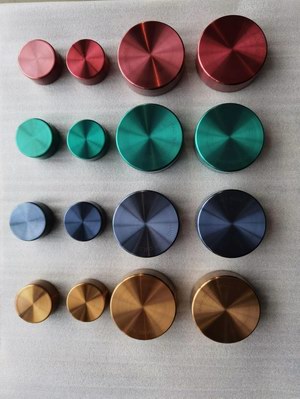
- Electroplating: Electroplating involves the deposition of a metal coating onto a substrate using an electric current. It offers excellent control over coating thickness, hardness, and surface morphology. Electroplated coatings can improve corrosion resistance, provide decorative finishes, and enable selective metallization.
- Electroless Plating: Electroless plating is a chemical process that deposits a uniform metal layer onto a substrate without the need for an external power source. It allows for the coating of complex geometries and provides excellent adhesion and corrosion resistance. Electroless plating finds applications in electronics, automotive, and aerospace industries.
- Anodizing: Anodizing is an electrochemical process that creates an oxide layer on metal surfaces, typically aluminum. This oxide layer enhances corrosion resistance, improves wear resistance, and allows for the integration of dyes or pigments to achieve decorative finishes. Anodized surfaces are widely used in architectural, automotive, and consumer electronics applications.
E. Laser Surface Treatments
- Laser Cladding: Laser cladding involves melting a powdered material onto a metal surface using a high-energy laser beam. This process creates a metallurgical bond, resulting in a high-quality coating with excellent adhesion, hardness, and wear resistance. Laser-clad coatings can be tailored for specific applications, such as high-temperature environments or corrosive conditions.
- Laser Surface Alloying: Laser surface alloying modifies the surface composition of a metal by melting a thin layer and introducing alloying elements. This process enhances surface properties such as hardness, wear resistance, and corrosion resistance. Laser surface alloying allows for precise control over the alloying composition and depth, resulting in tailored surface properties for specific applications.
- Laser Shock Peening: Laser shock peening involves subjecting the metal surface to high-intensity laser pulses, creating controlled shockwaves that induce compressive stresses. This process improves fatigue resistance, enhances mechanical properties, and reduces the risk of crack initiation and propagation. Laser shock peening finds applications in industries such as aerospace, power generation, and automotive.
F. Plasma-based Surface Treatments
- Plasma Etching: Plasma etching is a dry etching process that removes material from the metal surface using reactive plasma. It allows for precise control over material removal, enabling the creation of microstructures, patterns, and surface texturing. Plasma etching is widely used in microelectronics, MEMS devices, and precision machining.
- Plasma Nitriding: Plasma nitriding is a surface hardening process that enriches the metal surface with nitrogen. It improves hardness, wear resistance, and fatigue strength, while maintaining the core properties of the metal. Plasma nitriding finds applications in tools, dies, gears, and other components subjected to high wear and fatigue.
- Plasma Spraying: Plasma spraying is a thermal spray process that deposits a coating onto the metal surface using a high-temperature plasma jet. It allows for the deposition of various materials, including ceramics, metals, and alloys, providing enhanced wear resistance, thermal barrier properties, and corrosion protection. Plasma-sprayed coatings are used in aerospace, energy, and industrial applications.
IV. Advantages and Applications of Innovative Approaches
The innovative approaches discussed above offer several advantages over traditional metal finishing techniques. They provide enhanced performance, durability, and functionality to treated surfaces. Some key benefits include:
- Improved corrosion resistance, wear resistance, and hardness
- Customized surface properties for specific applications
- Enhanced aesthetics and decorative options
- Tailored functional coatings for advanced applications
- Increased product lifespan and reduced maintenance costs
These innovative approaches find applications in various industries, including:
- Aerospace and defense: for improved durability and performance of aircraft components
- Automotive: for enhanced corrosion protection and aesthetic finishes
- Medical: for biocompatible coatings and implant surfaces
- Electronics: for precision coatings, circuitry, and microfabrication
- Energy: for thermal barrier coatings, corrosion protection, and energy efficiency
V. Challenges and Future Directions
While innovative approaches in metal finishing and surface treatments offer significant advantages, several challenges need to be addressed for wider adoption. Some key challenges include:
- Cost considerations and scalability of advanced techniques
- Environmental and health implications of certain processes and materials
- Integration with Industry 4.0 technologies for automated and efficient production
- Exploration of novel materials and surface modifications for improved performance
In the future, research and development efforts will focus on addressing these challenges and expanding the capabilities of innovative metal finishing techniques. This includes the development of cost-effective and sustainable processes, the use of eco-friendly materials, and advancements in surface characterization and analysis techniques.
VI. Conclusion
Innovative approaches in metal finishing and surface treatments have revolutionized the way we enhance the properties of metal surfaces. Advanced coating technologies, nanotechnology-based treatments, electrochemical modifications, laser treatments, and plasma-based techniques offer superior performance, durability, and customization options. These approaches find applications in various industries, improving corrosion resistance, wear resistance, aesthetics, and functionality. However, challenges such as cost, environmental impact, and scalability need to be addressed for broader adoption of these techniques. Future research will focus on cost-effective and sustainable processes, eco-friendly materials, and integration with Industry 4.0 technologies.
In conclusion, innovative approaches to metal finishing and surface treatments have paved the way for advanced techniques that provide superior performance and customization options. From advanced coating technologies to nanotechnology-based treatments, electrochemical modifications, laser treatments, and plasma-based techniques, each approach offers unique benefits and applications. These innovative methods enhance corrosion resistance, wear resistance, aesthetics, and functionality, contributing to the longevity and improved performance of metal components. However, it is crucial to address challenges such as cost, environmental impact, and scalability to ensure widespread adoption and further advancements in the field.
FAQs
1. What are the key benefits of innovative metal finishing techniques?
Innovative metal finishing techniques offer several key benefits, including improved corrosion resistance, enhanced wear resistance, increased hardness, customized surface properties, and enhanced aesthetics. These techniques enable the creation of functional coatings for specific applications, leading to longer product lifespan and reduced maintenance costs.
2. How do nanocoatings enhance the performance of metal surfaces?
Nanocoatings provide a range of performance enhancements to metal surfaces. They offer improved hardness, scratch resistance, self-cleaning properties, and can exhibit functionalities like anti-reflectivity, anti-bacterial properties, and superhydrophobicity. Nanocoatings also provide opportunities for surface functionalization and customization, making them highly versatile in various industries.
3. Are innovative metal finishing techniques cost-effective?
The cost-effectiveness of innovative metal finishing techniques can vary depending on the specific technique, application, and industry requirements. While some techniques may initially have higher costs, they often provide long-term benefits such as extended product lifespan, reduced maintenance, and improved performance. Additionally, ongoing research and advancements aim to optimize these techniques for improved cost efficiency.
4. What industries can benefit from these advanced surface treatments?
Several industries can benefit from advanced surface treatments, including aerospace, automotive, medical, electronics, and energy sectors. These treatments enhance the durability, performance, and aesthetics of components used in these industries. For example, aerospace companies can benefit from corrosion-resistant coatings, while medical industries can utilize biocompatible surface treatments for implants.
5. What are the potential risks associated with plasma-based surface treatments?
Plasma-based surface treatments are generally considered safe when conducted in controlled environments by trained professionals. However, it is essential to follow proper safety protocols to minimize potential risks. These include the use of appropriate personal protective equipment, ensuring proper ventilation, and handling plasma-generating equipment with caution. Adhering to safety guidelines and regulations is crucial to mitigate any potential risks associated with these processes.
